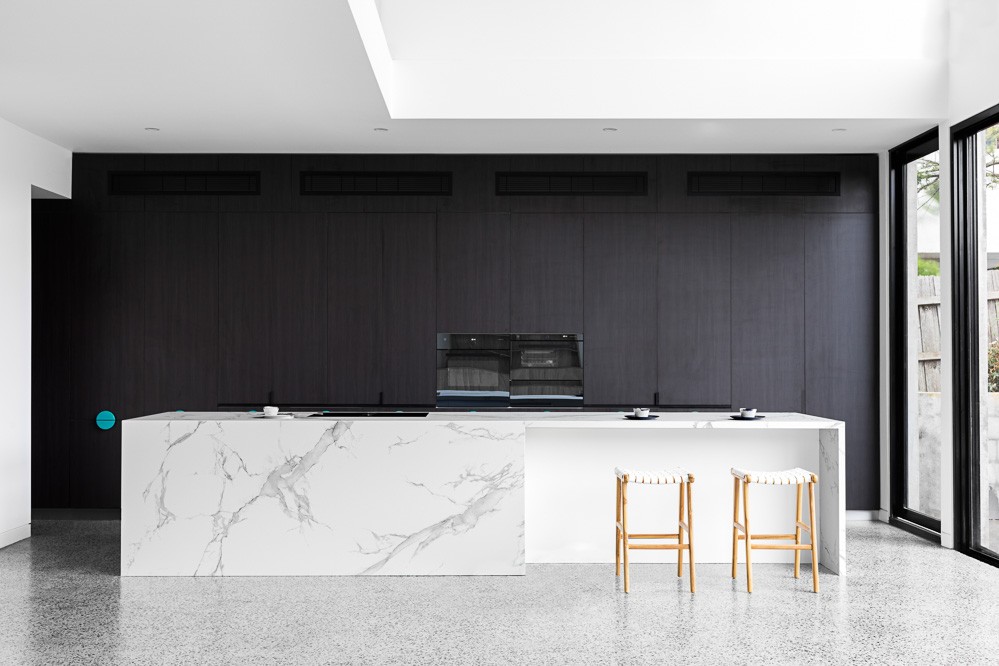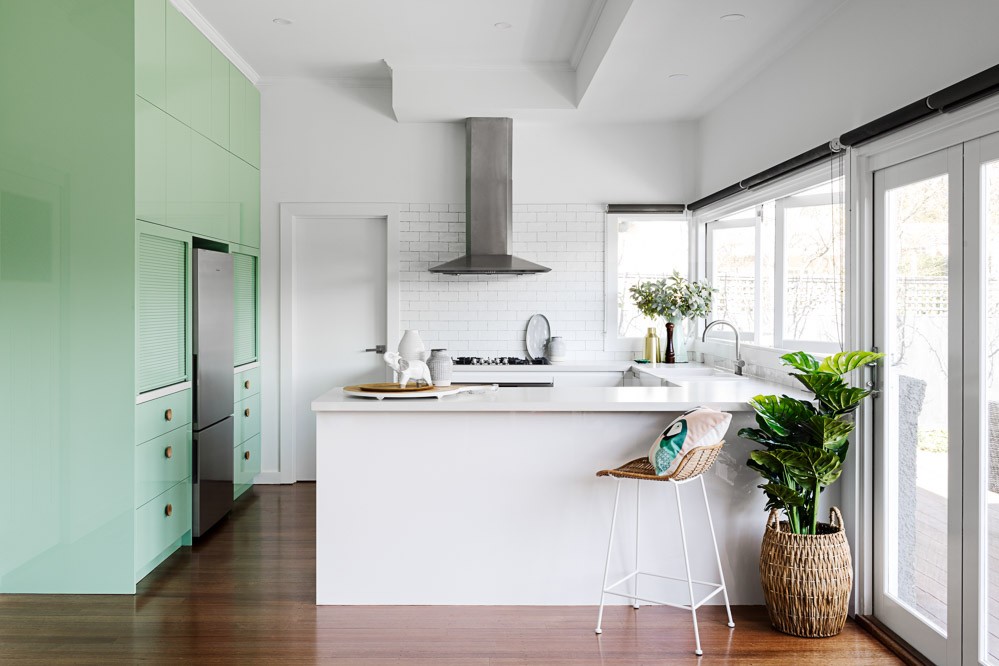The kitchen, a central hub of activity in any home, has evolved over time. From being a mere cooking space, it has transformed into a multifunctional area where meals are prepared, and memories are made. As an adult homeowner, enhancing the functionality and comfort of your kitchen might be high on your priority list. One effective way to achieve this is through renovation, which can include adopting an open-plan design or introducing various types of kitchen islands.
Renowned interior designer James Dawson highlights the significance of the kitchen as the “hub of the home”, with the kitchen island serving as the focal point. A kitchen island, for those unfamiliar, is a versatile counter that serves multiple purposes, from meal preparation to doubling as a dining space for breakfast and dinner.
This guide delves into the different types of kitchen islands, helping you decide which style aligns with your kitchen’s theme and space requirements. Whether you’re considering traditional kitchen island styles, portable kitchen islands for flexible use, or mobile kitchen islands that can adapt to your changing needs, there’s an option here for every home.
Even in smaller kitchens, innovative solutions like portable or mobile kitchen islands can add functionality without the need for extensive renovations. Keep reading to explore the various kitchen island styles available and how to choose the best one for your home.
TYPES OF KITCHEN ISLANDS


You need to match your kitchen island with your decor and area space. If you’re not sure what type you need for your home, read on to get ideas about the different types of kitchen islands.
- L-Shaped Kitchen Island
You can install cabinets to create additional storage space using this type, thanks to its generous capacity. If you have available space in your kitchen, incorporating this type of cabinet will provide you with ample room to manoeuvre and work comfortably. It’s especially beneficial if you have a helper while preparing meals, as it can accommodate more than one person.
However, this design isn’t convenient if you have a small kitchen. It will take up a large part of your L-shaped kitchen, leaving less space for other appliances such as your dishwasher. You need space for this because its door opens downwards, which means you risk tripping on it if you don’t have enough space in the kitchen.
- U-Shaped Kitchen Island
This type of kitchen island maximises efficiency in your kitchen. It offers ample storage space and provides a dedicated area for placing your small appliances. While it does occupy a significant amount of space in your kitchen, the benefits it brings make it worthwhile.
With this type, you gain increased storage capacity, a larger workspace for food preparation and chopping, and the option to add chairs for dining.
The vast size of this type can also be a nuisance – you have to run from one end to another if you’re in a hurry. You also have more space to clean every day. Its massive size can also make your kitchen feel crowded if you didn’t have much space in the beginning before you installed the island.
- Small Kitchen Island
This type is small like the rolling cart, but it doesn’t have wheels – it looks like a minuscule version of the large kitchen island types. However, the small size can also be inconvenient because it’s too small for some homeowners. They would instead buy the larger models to get full efficiency in the kitchen.
- Galley Kitchen Island
If you’re considering renovating your kitchen and changing it to an open-plan design, the galley is what you need. It’s not too big for small-size kitchens, but it’s still efficient concerning design and storage. You can even add bar stools for you to sit on when you’re eating.
If you want your kitchen to have more personality, the galley might be too dull for you. Its design is functional and straightforward, but may not be the best option if you have an elaborate kitchen plan.
- Circular Kitchen Island
A round-shaped kitchen island will surely make your kitchen appear unique. Typical kitchen islands come with straight lines, so if you’re looking for something different, go for circular. You can still add cabinets for storage if you want, or chairs for meals. However, your storage areas can be hard to reach with this design, and it’s not as efficient as the other types.
- Fully Functional Kitchen Island
This island almost seems like a tiny, independent kitchen. It comes with a sink, drainage, and enough workspace for food preparation. However, remember that your expenses will also grow – you have to add plumbing and an extra sink. Assess if you can afford it or go for the traditional kitchen island types instead.
- Double Kitchen Islands
This design is perfect for spacious kitchens and is ideal for homeowners who desire ample workspace and storage. Double kitchen islands offer separate areas for meal preparation and dining or entertaining. This layout can accommodate different types of kitchen islands, like one stationary and one mobile kitchen island, providing both stability and flexibility.
- Tiered Kitchen Islands
These islands feature multiple levels, usually with a lower working area for dining or serving and a higher tier for food preparation. This design is both functional and aesthetically pleasing, providing a clear separation between different kitchen tasks.
- Breakfast Bar Kitchen Islands
Ideal for casual dining and quick meals, a kitchen island with a breakfast bar is a versatile addition. It can be designed as a portable or mobile kitchen island, offering flexibility in smaller kitchens, or as a larger, more stationary piece in bigger spaces.
- Waterfall Edge Kitchen Islands
This style features a countertop that extends vertically down the sides of the island, creating a continuous flow of material. Waterfall edge islands are visually striking and can serve as a central showpiece in your kitchen.
- Eco-Friendly Kitchen Islands
For the environmentally conscious homeowner, kitchen islands made from sustainable materials or incorporating green features are becoming increasingly popular. These can range from reclaimed wood islands to designs that include energy-efficient appliances or composting systems.
- Industrial-Style Kitchen Islands
Combining functionality with a raw, edgy aesthetic, industrial-style kitchen islands often feature materials like stainless steel, exposed brick, and concrete. This style can include both stationary and mobile kitchen islands, catering to different functional needs in the kitchen.
- Pendant-Lit Kitchen Islands
These islands are designed with lighting as a key feature. Elegant pendant lights can hang above the island, combining form and function while providing ample lighting for kitchen tasks. This style often works with various types of kitchen islands, enhancing both traditional and contemporary designs.
- Furniture-Style Kitchen Islands
These islands resemble pieces of furniture and can include features like ornate legs and detailed woodworking, blending seamlessly with the kitchen’s decor. This design can be adapted to be a portable kitchen island, adding character and mobility to the space.
- Farmhouse Kitchen Islands
Characterised by rustic charm and comfort, farmhouse kitchen islands often use natural wood and vintage accents. They can be designed as mobile kitchen islands to add a touch of country warmth to any kitchen setting.
- Minimalist Kitchen Islands
For those who prefer a sleek, uncluttered look, minimalist kitchen islands focus on clean lines and simplicity. They often feature hidden storage and integrated appliances to maintain a tidy appearance.
- Built-In Seating Kitchen Islands
These kitchen islands extend to include a seating area, eliminating the need for a separate dining table. This is an excellent option for smaller kitchens, offering a space-saving solution for dining and socialising.
- Tech-Integrated Kitchen Islands
Catering to the modern homeowner, these kitchen islands come equipped with built-in charging stations, Bluetooth speakers, and other technological conveniences, making them a smart addition to any kitchen.
Each of these kitchen island styles can be tailored to fit various kitchen sizes and homeowner preferences, from portable kitchen islands for smaller, dynamic spaces to larger, more elaborate designs for expansive kitchens. When selecting a kitchen island, consider how it will complement your kitchen’s overall design and meet your specific needs.
THINGS TO CONSIDER WHEN INSTALLING A KITCHEN ISLAND


When planning to install a kitchen island, considering the available space is crucial. A kitchen island can be a fantastic addition, enhancing both the functionality and aesthetics of your kitchen. However, if not properly sized, it can overcrowd your kitchen, leaving insufficient space for comfortable movement.
It’s important to assess the current size of your kitchen and determine what adjustments might be necessary to accommodate different types of kitchen islands.
Kitchen islands typically occupy the central area of the kitchen – therefore, prioritising walk space around the island is essential. Ideally, there should be at least 91 cm of clear walk space to ensure comfortable movement around the kitchen. This is particularly important when incorporating larger kitchen island styles or stationary islands.
For smaller kitchens, particularly those with U- and L-shaped layouts common in Australia, adding a compact kitchen island (possibly a portable or mobile kitchen island) can be a smart solution. These types of kitchen islands, measuring approximately 1 meter by 1 meter, can fit well while maintaining a recommended walk space of about 90 cm. However, this arrangement might be suitable for just one person; in a busier kitchen, this could lead to a feeling of crowding due to the limited area.
If the walk space seems too restrictive, or if you’re aiming to include a larger, more elaborate kitchen island style, renovating your kitchen could be the best approach. Researching online for kitchen renovation experts in Melbourne, Sydney, Brisbane, or other cities can help you find a suitable designer.
Collaborating with professionals like GIA can ensure that your chosen kitchen island – whether it’s a large, multifunctional piece or a smaller, portable kitchen island – integrates seamlessly with your kitchen’s layout and .
TAKEAWAY
Installing a kitchen island can significantly enhance your kitchen’s look and functionality. Whether you’re considering a traditional, mobile, or portable kitchen island, select a style that complements your decor and appliances. For larger projects, consider a kitchen renovation and seek professional design assistance to ensure the best outcome.


Sam Street
Construction Manager
Sam is a qualified carpenter that has been working in the construction industry for the past thirteen years, both in Australia and abroad. With over a decade of experience, Sam has gained an extensive knowledge of the residential construction space.


